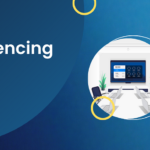Best Practices for Securing Your Video Conferencing Sessions
In today’s digital world, securing your video conferencing sessions is more crucial than ever. Whether you’re holding a business meeting, a virtual classroom, or a casual catch-up with friends, it’s essential to protect your privacy and data. This guide will help you understand how to keep your video calls safe and secure.
Understanding the Risks
Video conferencing has become a staple for communication. However, with its rise in popularity, the risks associated with it have also increased. Unsecured video calls can be intercepted by unauthorized individuals, potentially leading to data breaches or privacy invasions. Therefore, securing your video conferencing sessions is not just about protecting data but also about ensuring your peace of mind.

Choosing a Secure Platform
To start with, always choose a reputable video conferencing platform. Look for platforms that offer robust security features such as end-to-end encryption. End-to-end encryption ensures that only you and the person you’re communicating with can view the video or audio. This is a fundamental step in securing your video conferencing sessions. Additionally, make sure the platform is regularly updated to address any security vulnerabilities.
Set Strong Passwords
Creating strong, unique passwords is another key practice for securing your video conferencing sessions. Avoid using easily guessable passwords like “123456” or “password.” Instead, use a combination of letters, numbers, and special characters. Passwords should be long and complex. For extra security, consider enabling two-factor authentication, which adds a layer of protection by requiring a second form of verification.
Use Waiting Rooms
Most video conferencing platforms offer a feature called waiting rooms. This allows you to screen participants before they join the main meeting. By enabling waiting rooms, you can control who enters your session and prevent unauthorized individuals from gaining access. This is a simple but effective way to enhance the security of your video conferencing sessions.
Lock the Meeting
Once all intended participants have joined the call, consider locking the meeting. This feature prevents any new participants from joining the session. Locking the meeting ensures that no one else can enter, which is particularly useful if you are discussing sensitive information. It’s a straightforward measure that adds an extra layer of security.
Avoid Sharing Meeting Links Publicly
Be cautious about where you share your video conferencing links. Sharing these links publicly or on social media can lead to unwanted attendees joining your session. Instead, send the links directly to participants via secure channels such as email or private messages. This practice helps in securing your video conferencing sessions from potential disruptions.
Monitor the Participants
During your video call, keep an eye on the participants. If you notice any suspicious behaviour or individuals who should not be present, remove them immediately. Most platforms allow hosts to control and manage participants, which helps maintain the security of your session.
Update Your Software Regularly
Software updates often include security patches that fix vulnerabilities. Therefore, it’s essential to keep your video conferencing software up to date. Regular updates help protect your system from potential threats and ensure that you are using the latest security features.
Educate Participants
Make sure that all participants in your video conference are aware of basic security practices. For example, encourage them to use strong passwords and avoid clicking on suspicious links. Educating everyone involved helps in creating a safer and more secure environment for your video calls.
Use Encryption
Encryption is crucial for securing your video conferencing sessions. Ensure that your chosen platform uses encryption for both video and audio data. This ensures that any data transmitted during the call is protected from interception by unauthorized parties.
Limit Screen Sharing
Control who can share their screen during the meeting. By limiting screen sharing to only trusted participants or the host, you reduce the risk of unauthorized access to sensitive information. Make sure this setting is properly configured before the meeting begins.
Be Cautious with Recordings
If you need to record your video conference, be mindful of where the recordings are stored and who has access to them. Securely store recordings and only share them with trusted individuals. Unauthorized access to recordings can pose significant privacy risks.
Review Security Settings Regularly
Regularly review and adjust your video conferencing security settings. Security features and best practices evolve, so staying informed about the latest updates and settings helps in keeping your sessions secure.
Conclusion
Securing your video conferencing sessions is essential for protecting your privacy and data. By following these best practices, you can create a safer environment for all participants. From choosing a secure platform to educating participants, each step plays a crucial role in maintaining the integrity of your video calls.



